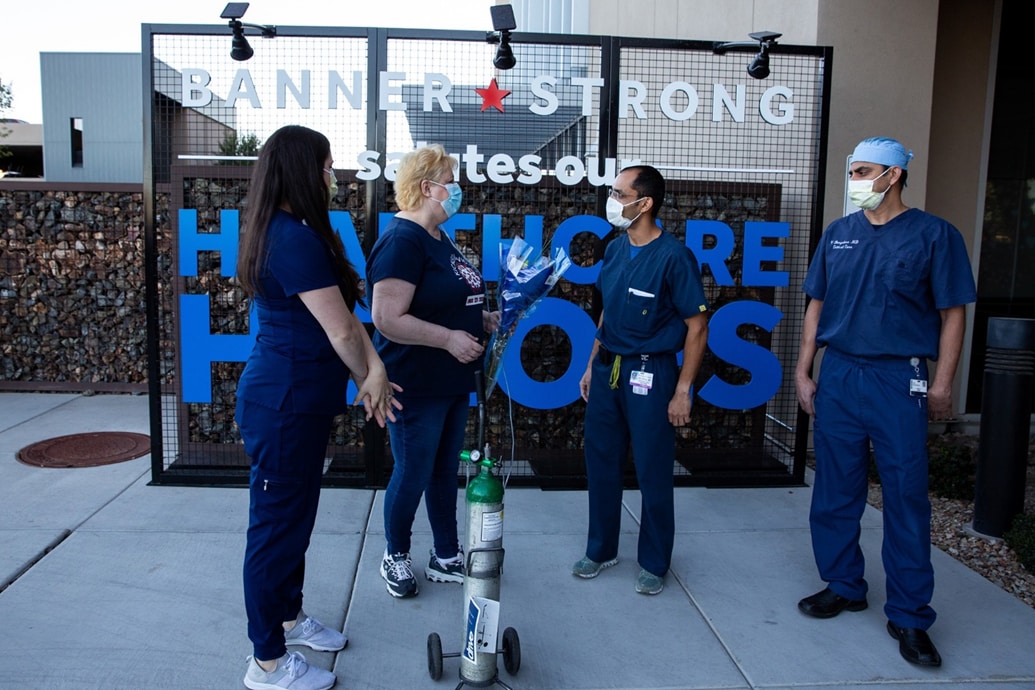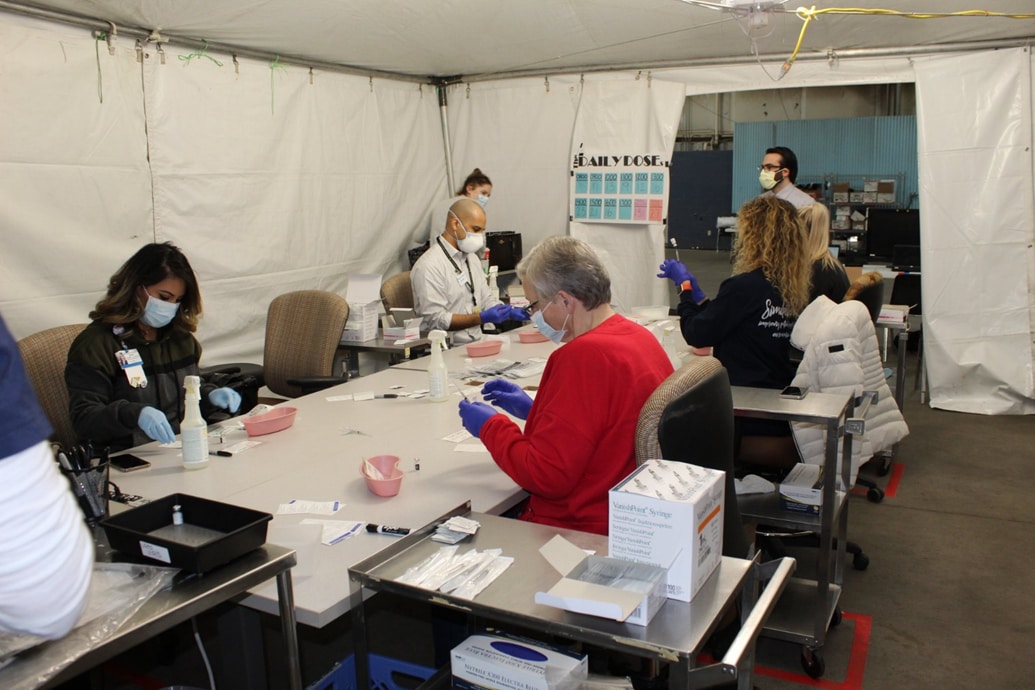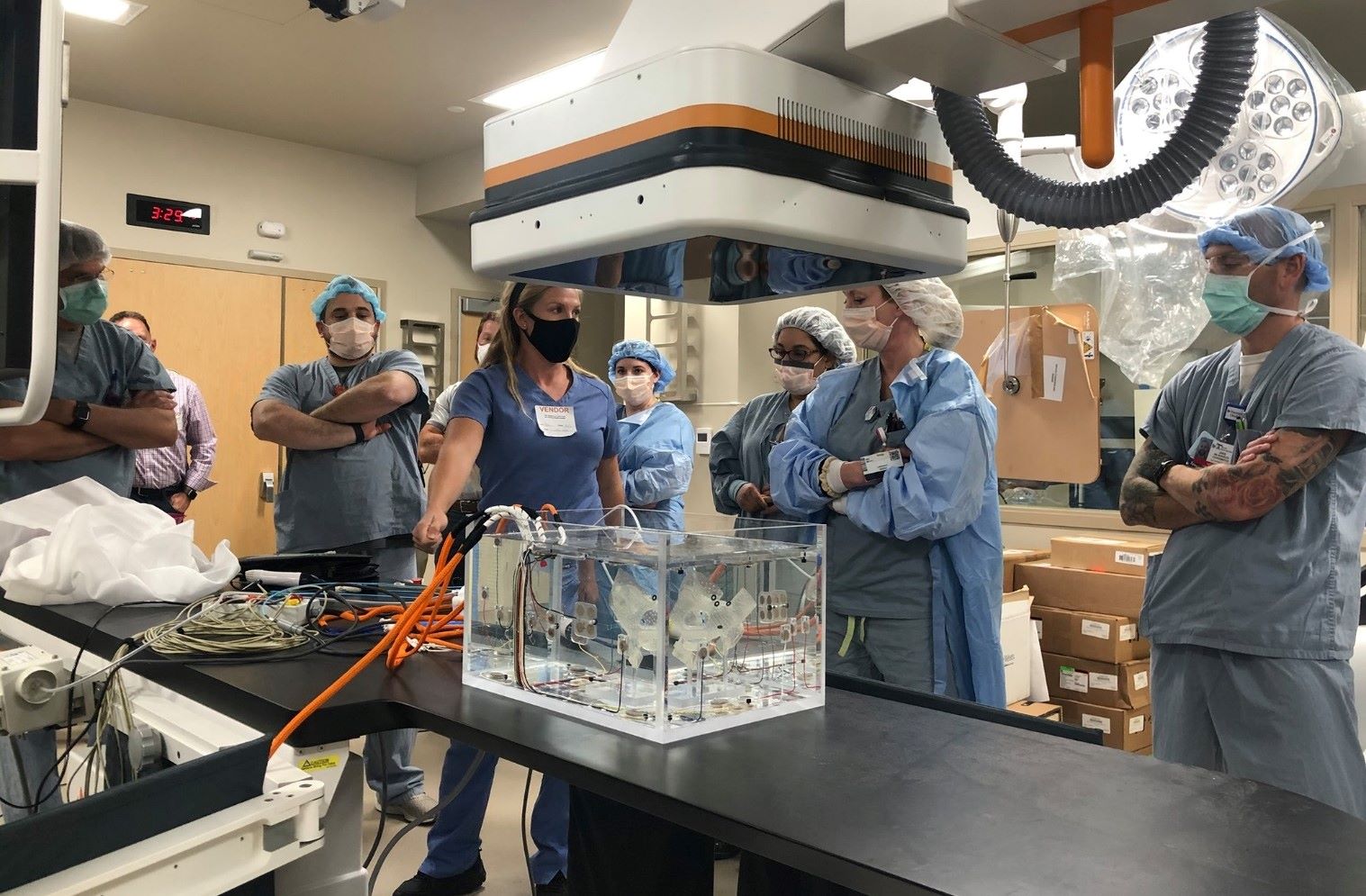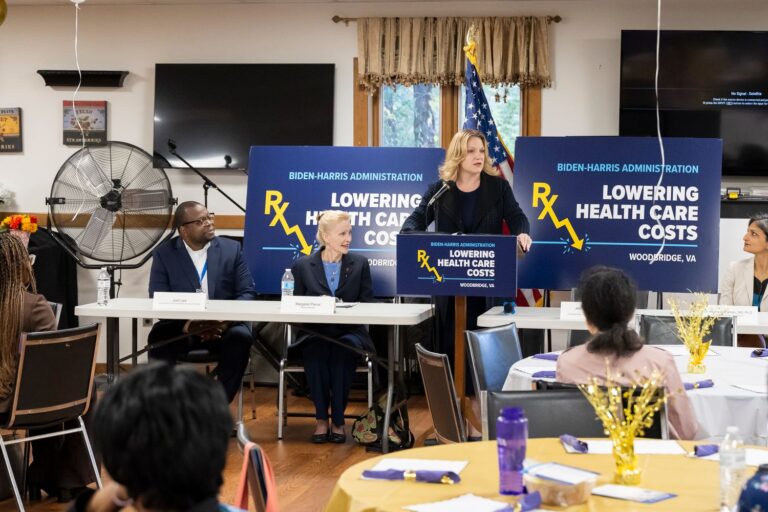Peter Fine and Two Decades of Challenging the Status Quo with Banner Health
For over 20 years, Banner Health has been recognized as a one of the largest non-profit hospital systems in the country for its high-quality in clinical care. The Phoenix-based company operates 30 acute-care hospitals and a number of other healthcare entities in six states which generates more than $9.5 billion in revenue.
In 2000, Banner Health appoints Peter Fine as the CEO of the company, and he led the company ever since. With more than two decades of staying at the executive position, Peter is one of the longest tenured health system CEOs in the country. During his leadership, Banner Health has moved away from being merely a healthcare delivery organization and has instead become nationally known for being an ever-improving clinical quality company.

As Arizona’s largest private employer, Banner Health stays ahead of the game with its effective leadership and innovation-adopting mindset. Peter Fine describes his company as an organization that is continually challenging its own status quo. Let’s unveil how Banner Health thrives and sustains over the years.
Focus amid the Crisis
As the entire healthcare industry is wrecked by the pandemic, Banner Health had its own loss and challenges. By the mid-2020, the company witnessed it’s a 30% drop of inpatient volume while its outpatient services declined even more sharply – around 40% to 60%. The organization reported $52.7 million loss since the start of 2020, albeit its improved income from operations. However, these challenging moments have been a recharged time for Peter and his company as Banner quickly innovated and adjusted to overcome the hurdles.
“Tune Out the Static”
Peter pointed out that the pandemic has enabled his team to focus on what really matters. As the Covid-19 hit, the company stood up its transport center that allowed smooth referral patient across the system. Banner cooperated with the state to build a central system that allocated patients, especially those from the far reaches of the state or overloaded hospitals, to a Banner’s institution that had capacity. This system freed the company from getting overloaded and failing to manage the patients during rush hours. With its success, the Banner’s coordination process expanded to a statewide system and enabled Arizona to be the only state in the country that had this central resource for patient referrals and then to move those patient referrals where the capacity existed.
“Proved to be of huge value come July, when we just got overloaded, inundated towards the end of June and then into the middle of July, I think July 10 was our high point and then it’s been decreasing ever since.” – Peter said. “But this learning of how to behave and think in a much different way and out of the norm became a tactic and quite frankly, a skill that we’re now analyzing and thinking through on how it should be retained on a go-forward basis.”

The ability to channel concentration and invested resources in solving the problem is the key to sustain during a crisis. Banner Health have struggled to bring in telemedicine for a long time yet all of a sudden, within a few months, 80% of the patients coming into its medical groups were coming in through a telemedicine process. It was nothing but a focused spirit for an urgent time that make it happen, Peter shared. “We did what I call a ‘tune out the static.’ We stopped paying attention to noise that didn’t matter and only paid attention to noise that did.” – he explained.
Collaboration Drives Innovation
In June 2019, Banner Health debuted a digital front door to direct patients to appropriate resources for care and enable them to book their own appointments online without placing a phone call. The company partnered with Kyruus ProviderMatch to roll out a platform enabled patients to schedule visits online with primary care physicians (PCPs).
With the arrival of the COVID-19 pandemic in March 2020, Banner suddenly had a need to arrange appointments for COVID testing. To better manage thousands of inquiries, says Christen Castellano, MBA, vice president of customer experience channels at Banner Health, it made sense to enable patients to automatically book their own appointments. The platform, however, was set up to schedule visits with providers—not to book time slots at testing site locations. The health system and vendor worked together to adapt the technology.

“This was the turning point,” Castellano says. The team took the platform’s original “capability and transformed it in a way that improves our business and improves customers’ access to care. We started using the tool by location instead of by specific provider.”
While collaborations between health systems and vendors are not unusual, the pandemic accelerated the need and pace for innovation.
“We’ve had the benefit of working with the Kyruus team for two years, so I felt like we were really well positioned to pivot during COVID,” says Heather Francis RN, MBA, clinical director of digital integration for Banner Health. “In particular, as we learned of design requirements, we were able to work directly with the Kyruus team to say, ‘This is what we need in order to be accurate. This is what we need in order to meet the demand of vaccines that are going to be allocated.’ “
“Understanding our organization and our customer needs helped us bring to the collaboration a level of creativity and adaptability that’s needed to continually react” to developments, Castellano says. “You need those ingredients of a deep understanding of your business in relationship to your customers, a collaborative effort with your vendor partners, and, quite frankly, other partners who are helping you do this across functional areas.”
The collaborative process expanded over time, Francis says. The team built upon lessons learned during development of COVID-19 testing appointments and further iterated to develop processes to schedule COVID-19 vaccination appointments.
“It’s about looking at your design requirements and the needs from the customer perspective, and having a team that’s willing to push boundaries, do things a little bit differently, and see how you can be creative,” Francis says. “It’s been an extremely positive process, and we’ve been able to do things very quickly.”

Scale Matters
For Peter Fine, the importance of scale is really highlighted during the crisis time like Covid-19. The regional scale enabled Banner Health to coordinate the movement of patients so as not to overload any one part of the organization. Moreover, it also allowed the company to send employees to a hotspot. He emphasized the advantage of having broad enough scale where he can adjust his resources when needed.
Another perk of scale for Banner Health is the ability to acquire product and having its own warehouse. “So we have our own warehouse and distribution center. We could go right from a manufacturer right into our warehouse. We didn’t have to go through a third party for a lot of things.” – Peter said. “And that can only be done if you’re big enough to be able to pull that off. And all of our assets in Arizona are served from our own distribution capability, with the exception of some physician offices, which are served by a third party because they’re in small numbers.”

Banner Health was also able to accommodate a large number of vaccine appointments for its employees and patients without mishandling the situation. While employees receive a link to directly schedule appointments; the general population has different entry points, through their local county health departments.
To communicate relevant information, the Banner Health website features a page devoted to COVID-19 vaccinations. It offers a screening tool to help community members determine whether they are eligible for the vaccine, scheduling guidance, and links to county websites where patients can schedule vaccine appointments at multiple locations in their county, including Banner facilities.
“One of the many things that’s important to us, is the concept of scale,” Castellano says. It was essential to “be able to do this with great accuracy and the ability to replicate it at scale as we launched it out to our community.”
Peter Fine on How to Build a Company That Lasts

Drive for Better Clinical Outcomes
Banner Health has survived many disruptive environments. Yet despite its financial hardship or human challenges, the company always heads towards a clinical outcomes company. “We, as a company, are not afraid of a disruptive environment, because we think it creates opportunity.” – Peter noted. “Our strategic initiatives in recent years have really been all about clinical outcomes. How do we not only do, but then demonstrate that we have and are improving our clinical outcomes?”
As a part of their strategy as a clinical quality company, Banner has aggressively pursued value-based purchasing, which it sees as the wave of the future. “We see value-based purchasing right at the sweet spot for a clinical quality company. I don’t see that sweet spot for a healthcare delivery company, because with a delivery company it’s all about units of service. For a clinical quality company, it’s all about ‘how do you provide a clinical product in an efficient and cost-effective manner?’”- he shared.
The company has developed intentional study groups, known as clinical process groups, to closely research and examine clinical best practices. One such group was put together because Banner wasn’t satisfied with the results of its small bowel surgeries. This clinical process group discovered through their research that if you ambulate and feed patients on the first day—contrary to what most doctors were trained to do—you get better results. Banner implemented the findings of the study group, and the clinical outcomes improved dramatically. The length of stay for small bowel surgery dropped 4.5%, complications dropped 10%, mortality rate dropped 57%, and 30-day readmission rate dropped 22%. This significant level of improvement and these impressive statistics were made possible because of Banner Health’s commitment to focusing on and improving clinical outcomes.

In their quest to continually improve clinical outcomes, Banner Health has also stayed on the cutting edge of technological integration, investing in an impressive electronic framework that allows physicians and nurses in all of their facilities to stay connected. The company accelerated its digital health program by partnering with Xhealth as the deployment platform. In doing so, the Phoenix-based, 30-hospital health system is looking to create the infrastructure for a hybrid healthcare strategy that includes a robust remote patient monitoring platform.
“Banner Health’s mission is to make healthcare easier so life can be better,” said Jeff Johnson, vice president of innovation and digital health for Banner Health. “Our implementation of Xhealth with Cerner is a vital solution for connecting our clinical care teams with their patients outside the four walls of care. By enabling ‘digital prescriptions,’ starting with Babyscripts, we are innovating in a way that helps contribute to Banner’s purpose to create a new model of care.”
Fine emphasizes, “You have to show that you are affecting either cost of care or you are positively affecting clinical outcomes as an end result of the investment you have made technologically.” This is something Banner does well; technological integration is just one more way they stay on top of clinical outcomes.
Diverse Team That Survives Disruption
Unlike many non-profit healthcare systems that recruit local board members for their reputation in the community, Banner Health looks for a board with content expertise from a variety of domains. “I think you must bring into the board room people from companies that deal with the front door of the consumer.” – Peter said.
For example, the company recruited a former chief strategy officer of Cox Communications to be its board member because of her experiences working in a disrupted industry. “She was recruited because the cable industry is being disrupted. She brings incredible insight into modifying your company’s strategy in a disruptive environment. And they’re also an industry that deals with direct-to-consumer marketing.” – Peter shared.
He also acknowledged an occurring demographic change. Over the next decade, the biggest demographic change in Arizona is going to be within the Hispanic population. He wanted someone on the board to help him understand how to market to and serve a multicultural population. This led to the recruitment of the former vice president of multicultural marketing at Disney, Procter & Gamble, and Coca-Cola, a Hispanic person, who is able to give Banner insight into the changing nature of Hispanic consumers.
For the challenge of marrying the financing of care with the delivery of care, Peter invited the former CEO of Blue Cross of Colorado to consult his team as Banner has grown from virtually no at-risk premium business to $2 billion and growing. An assembly of competent and diverse domain expertise-based board has enabled Banner Health to overcome one of the impediments that many growth-oriented health systems face—the localism and the parochialism of the board.
For Leaders: “Visibility Breeds Credibility”
Trust is critical to success in the healthcare business. This is true for those working in any aspect of the industry, but especially those working as healthcare providers or those working in the business aspects of the industry. Peter notes that one of the easiest ways to achieve a close level of trust is to remain transparent and visible.

“Visibility breeds credibility, credibility breeds trust,” he says. “If you want to be trusted, you better be visible.” This ability comes in all different shapes and forms. Whether roaming around the hospitals or having a video chat with all of your employees. In the time of crisis, Peter put videos out to more than 30,000 employees every other week which was a great way to connect every constituent of the company together. “So communication is the key.” – he emphasized. “And it almost doesn’t matter if you’re walking through an ICU or you’re communicating like I’ve been communicating, it’s about massive amounts of communication in a manner that is trustworthy.”
As a leader, you also need to build trusts within your employees. Peter recalled the time when one of his board members showed off during the meeting. While he could have stopped that person anytime, Peter chose to let him finish his talk. “I could have interrupted him anytime I wanted to, because he perceived himself as a content expert and he wasn’t.” – he said. “But I’m trying to build trust with the board and having them feel comfortable they can say whatever they want to say, because that gives me the ability to say whatever I want to say.”
The philosophy of building a company nurtured with trust has been helped Peter to lead Banner Health over 20 years. In a board room, he allowed any board member, even with his management team there, to feel comfortable in saying whatever they want to say. In return, Peter can disagree with them nicely and tactfully in front of the rest of the board, which creates an environment of trust between governance and management. “People must see a leader as authentic and approachable. That can be hard depending on your style. But leaders must do their best to be authentic, approachable and honest communicators.” – Peter emphasized.
Defy the Status Quo
Under Peter Fine’s tenure, Banner Health became not only the company that overcome disruptive moments but also constantly seeks disruption to innovate and improve itself. “We are constantly looking for opportunities to challenge what we do, to find an opportunity to do it differently and better. This is a major difference I think between Banner and other companies, and the reason why we have achieved some of the things we have achieved.” – Peter believed. “We are willing to say, ‘the status quo very well could be done differently.’ And so we self-analyze ourselves… transparency around information is very important to us—not to blame, but to find opportunities to improve.”









